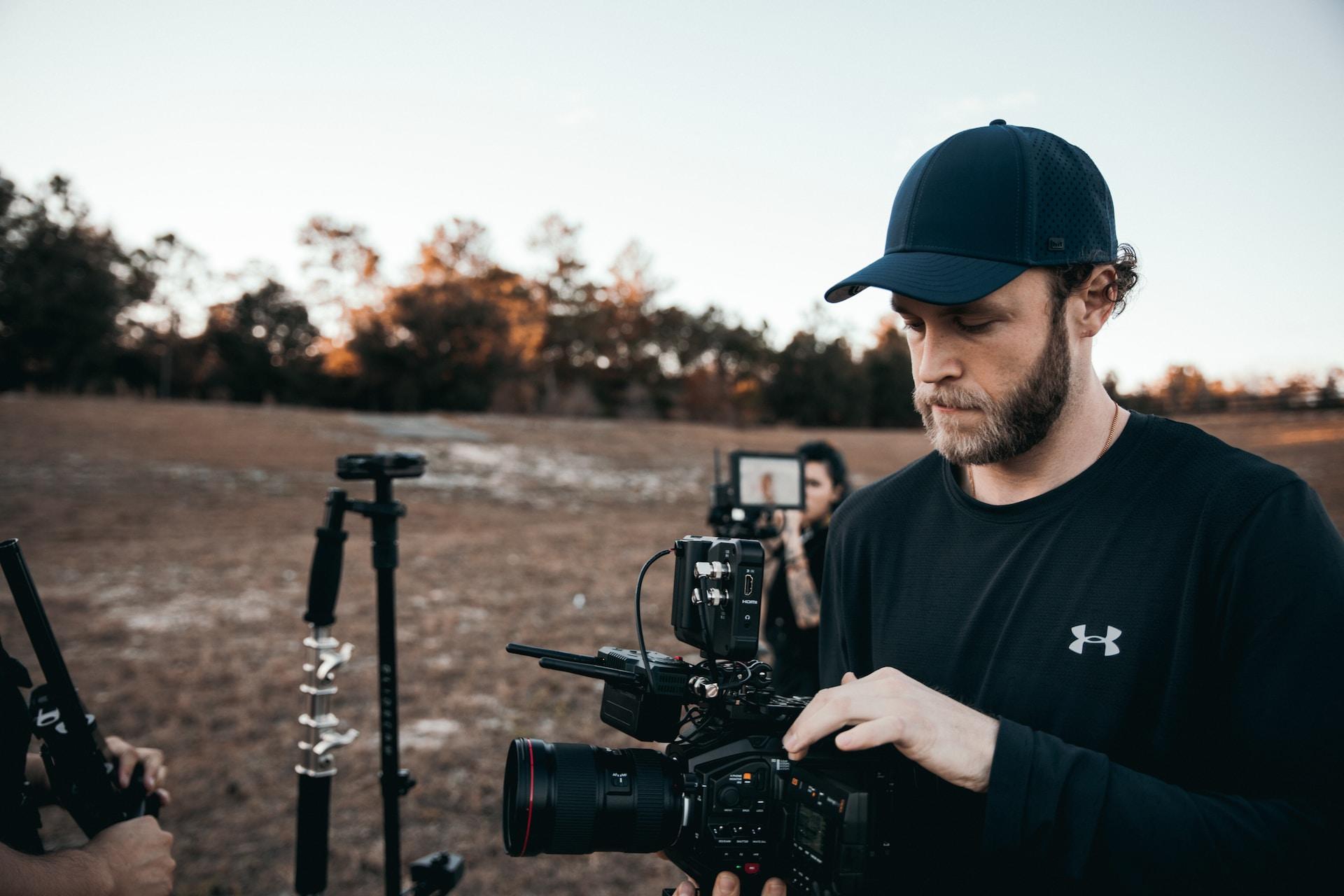In the world of filmmaking, the role of a cinematographer is both fascinating and crutial. Cinematographers, often referred to as a DOP or DPs (Director of Photography), play a crucial role in bringing a director's vision to life through their mastery of the art and science of cinematography.
In this article, we'll explore what cinematography is, what a cinematographer does, how to become one, and the distinctions between cinematography and videography.

Understanding Cinematography
Cinematography is the art and craft of capturing moving images on film or digital media. It encompasses the visual aspects of filmmaking, including the composition of shots, camera movement, lighting, and the use of visual storytelling techniques to evoke emotions and convey the narrative.
What Does a Cinematographer Do?
A cinematographer, or DP, is responsible for the visual elements of a film or video production. Their duties include:
- Shot Composition: The cinematographer decides how to frame each image, choosing the right angles and perspectives to enhance the narrative.
- Camera Movement: They determine when and how the camera moves to create dynamic and engaging images, whether through tracking, panning, tilting or stabilisation equipment.
- Lighting: Cinematographers are masters of lighting, and by working together with a gaffer, is using it to set the mood, emphasize characters or objects, and create the desired atmosphere for each scene.
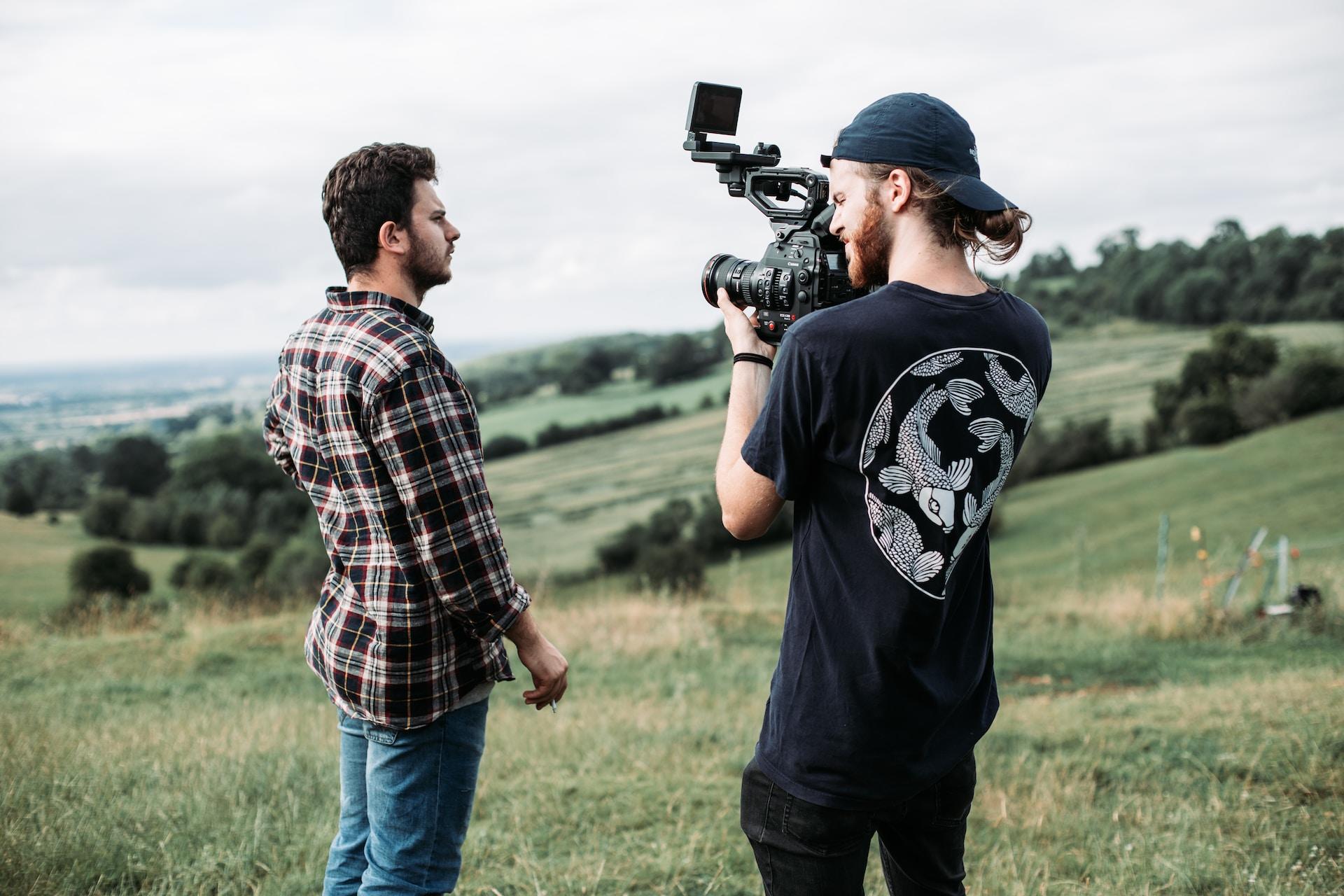
- Visual Style: They work closely with the director to create a visual style that complements the story and helps convey the emotional tone of the story.
- Camera and Equipment Selection: Cinematographers choose the appropriate cameras, lenses and equipment to achieve the desired visual effects.
- Collaboration: They work with the director, production designer and other team members to ensure a consistent visual approach.
Cinematographers vs. Videographers
Cinematography and videography are often used interchangeably, but there are key differences between the two.
Videographers typically focus on capturing events, such as weddings, news, or corporate videos. Their work often involves minimal post-production and a straightforward, documentary-style approach.
Cinematographers, on the other hand, are deeply involved in the storytelling process of a film. They employ advanced camera techniques, lighting setups, and artistic creativity to create a visual narrative that complements the director's vision.

Becoming a Cinematographer
If you're passionate about visual storytelling and aspire to become a cinematographer, here are some steps to get started:
- Education: Pursue formal education in film, cinematography, or a related field. Many renowned film schools offer cinematography programs.
- Hands-On Experience: Gain experience by working as a camera assistant, gaffer, or in other roles on film sets. This hands-on experience is invaluable.
- Networking: Build relationships within the industry. Networking can lead to opportunities and collaborations with experienced professionals.
- Create a Reel: Develop a portfolio showcasing your best work. A strong reel is crucial when seeking cinematography jobs.
- Stay Informed: Keep up with industry trends, new camera technologies, and emerging techniques in cinematography.
If you are thinking of starting your own production company, read this article.
Famous Cinematographers
Several cinematographers have achieved legendary status in the industry. Names like Roger Deakins, Emmanuel Lubezki, and Janusz Kamiński are synonymous with exceptional cinematography. Studying their work can provide valuable insights and inspiration for aspiring cinematographers.
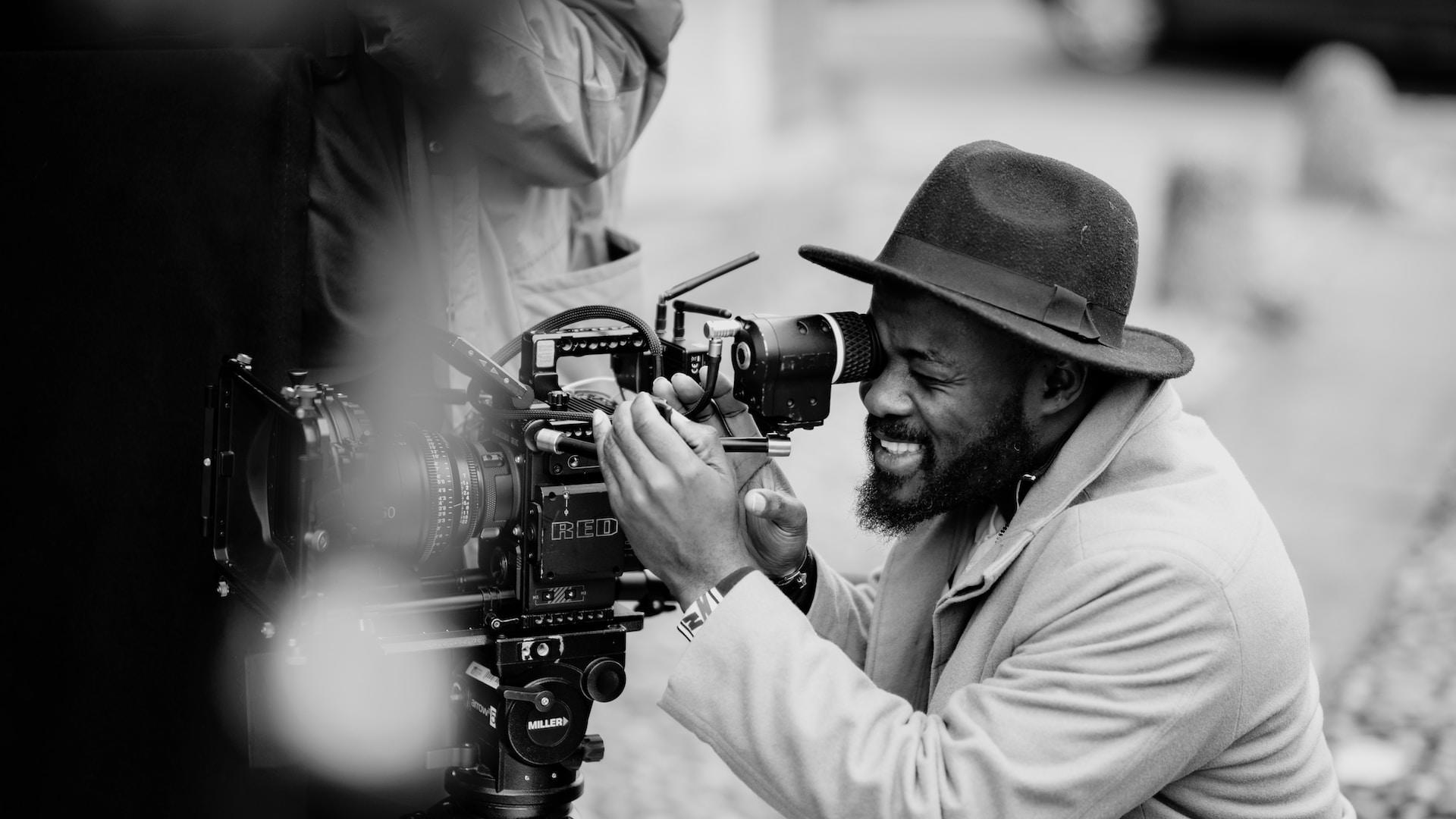
Let's look closer at a few famous cinematographers and the valuable insights they offer to aspiring filmmakers:
Roger Deakins:
Roger Deakins is one of the most celebrated cinematographers in the industry. He's known for his meticulous attention to detail and his ability to create visually stunning compositions. Deakins has been the Director of Photography for numerous acclaimed films, including "Blade Runner 2049," "No Country for Old Men," and "The Shawshank Redemption." Aspiring cinematographers can learn from his keen sense of lighting, camera movement, and storytelling through visuals.
Emmanuel Lubezki (Chivo):
Emmanuel Lubezki, often referred to as "Chivo," is a three-time Academy Award-winning cinematographer. He is known for his long, fluid takes and innovative use of natural light. Lubezki's work on films like "The Revenant," "Birdman," and "Gravity" showcases his mastery of crafting immersive and visually captivating scenes. Aspiring cinematographers can gain insights into the use of natural light and the art of creating uninterrupted shots.
Janusz Kamiński:
Janusz Kamiński has a long-standing collaboration with director Steven Spielberg, and his work has contributed to the visual appeal of many iconic films. Some of his notable projects include "Schindler's List," "Saving Private Ryan," and "Jurassic Park." Kamiński's cinematography often conveys emotion and a strong sense of atmosphere, offering lessons in how to use visual elements to enhance the storytelling.
Studying the work of these and other famous cinematographers provides several benefits for aspiring filmmakers:
- Visual Inspiration: Famous cinematographers are known for their unique styles and innovative approaches. By studying their work, aspiring cinematographers can gain inspiration and ideas for creating visually striking scenes.
- Technique Exploration: Each cinematographer has their own set of techniques and methods. Analyzing their work can help aspiring cinematographers understand different camera movements, lighting setups, and framing choices.
- Problem-Solving Skills: Learning how famous cinematographers tackled challenging scenes or lighting conditions can help aspiring cinematographers develop problem-solving skills and adapt to various situations on set.
- Artistic Sensibility: These cinematographers often have a strong artistic sensibility, which can inspire aspiring filmmakers to think creatively and consider the visual aspect of storytelling as a form of art.
- Mastery of Equipment: Famous cinematographers are often at the forefront of using the latest camera technology and equipment. This can provide insights into how to make the most of available tools.
- Collaboration: Many of these cinematographers have strong collaborations with directors and other crew members. Observing how they work within a team and communicate their creative vision can be instructive.
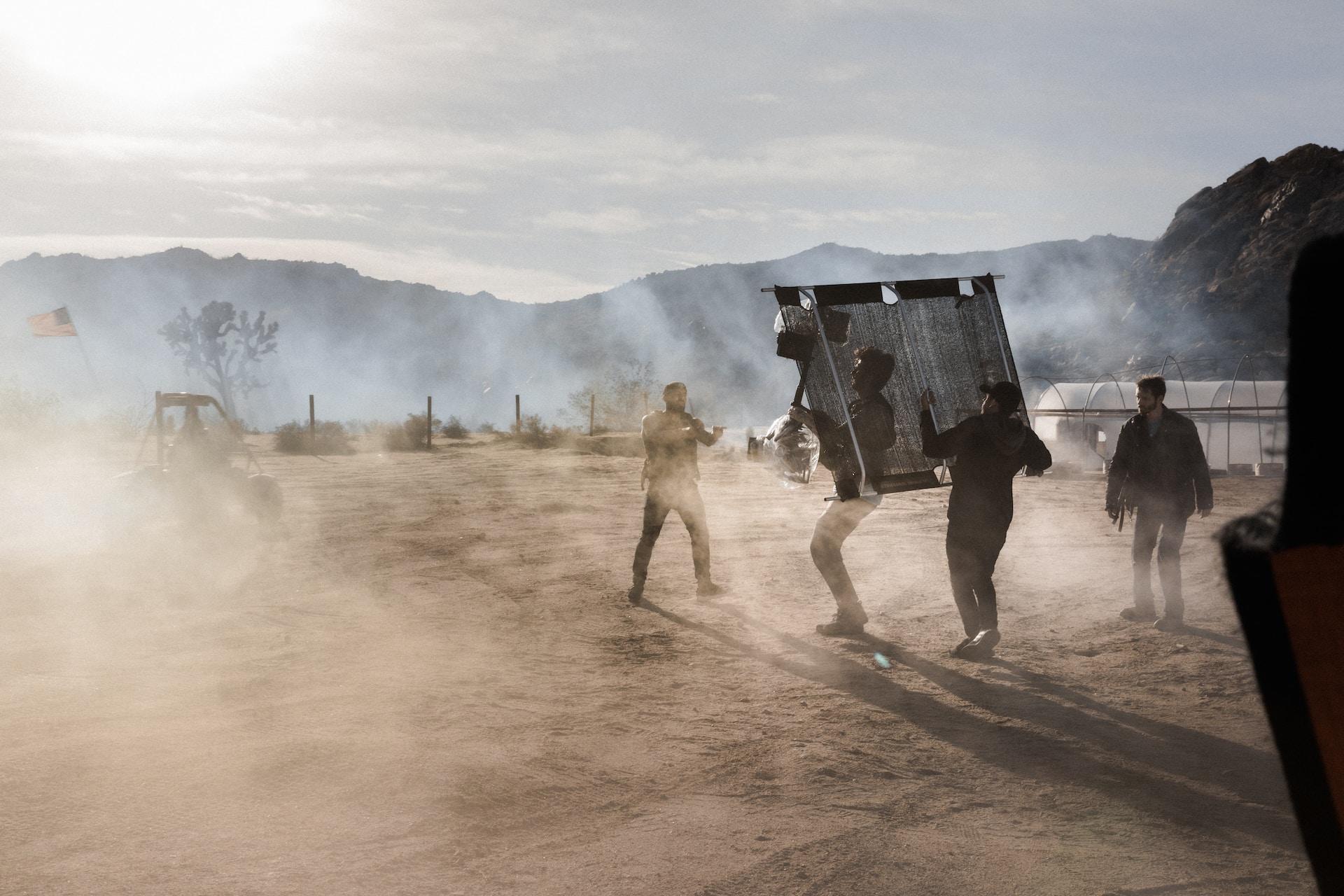
Famous cinematographers like Roger Deakins, Emmanuel Lubezki, and Janusz Kamiński have left an indelible mark on the world of filmmaking through their exceptional work. Their films serve as a valuable source of inspiration and education for aspiring cinematographers who aim to refine their craft and contribute to the art of visual storytelling in the film industry.
The Role of the Cinematographer
In the world of filmmaking, the cinematographer plays a vital role in shaping the visual language of a film. Their ability to convey the director's vision through the lens, master lighting, and create captivating compositions is what sets them apart.
Aspiring cinematographers can climb the creative ladder by continually honing their skills, gaining experience, and staying dedicated to the craft of visual storytelling.
Just like a director of a documentary, a cinematographer needs to be good at capturing beautiful and moving images in the moment.
- Shaping the Visual Language:
- The cinematographer is responsible for translating the director's vision into visual reality. They work closely with the director to understand the emotional and thematic goals of the film and then employ their technical and artistic expertise to create a visual language that aligns with those goals. This includes choosing camera angles, framing shots, and deciding on the use of light and color to evoke specific moods and atmospheres.
- Mastering Lighting and Composition:
- A cinematographer is often described as a "painter with light." They possess an intricate understanding of lighting techniques and how to use them effectively. This includes natural and artificial lighting, as well as the control of shadows and highlights. Their mastery of composition involves deciding where to position the camera, how to frame shots, and how to create visual depth within the frame. These skills are vital in conveying the intended emotions and storytelling nuances of a film.
- Creating Captivating Compositions:
- The ability to compose visually stunning and emotionally resonant images is a hallmark of a great cinematographer. They have a keen eye for framing subjects, objects, and landscapes in a way that captures the viewer's attention and conveys the narrative. Achieving captivating compositions involves understanding the principles of visual design, such as the rule of thirds, leading lines, and balance.
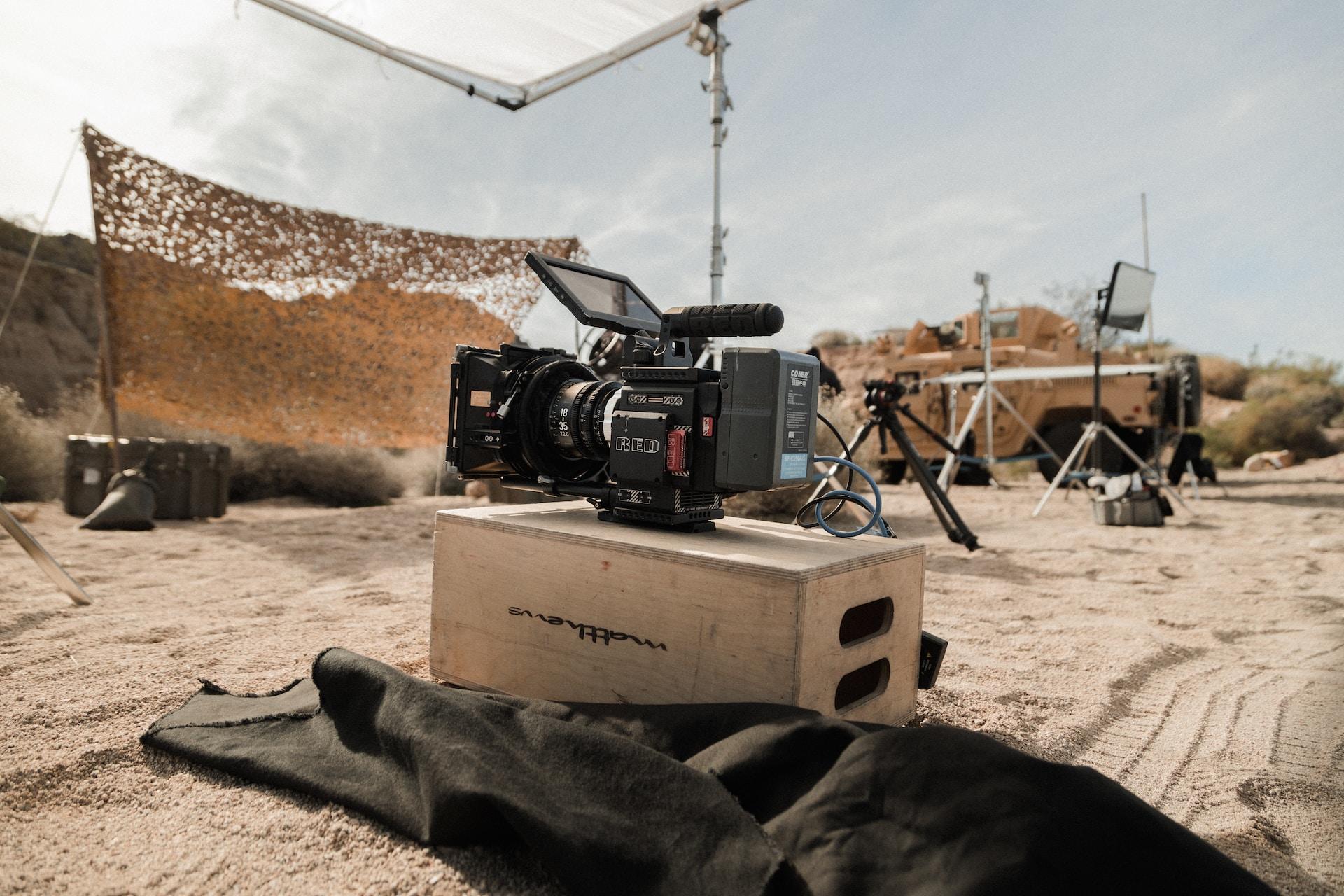
- Collaborative Skills:
- Cinematographers work closely with various members of the film crew, including the director, production designer, gaffer, and camera team. Effective communication and collaboration are essential to ensure that everyone is working towards a unified visual vision for the project.
- Technical Proficiency:
- Beyond the artistic aspects, cinematographers must also be technically proficient with a wide range of camera equipment, from traditional film cameras to digital cameras, lenses, and accessories. They are responsible for selecting the right tools for the job and ensuring that the technical aspects of filming, such as exposure and focus, are impeccable.
- Continual Growth and Dedication:
- The world of cinematography is constantly evolving with advancements in technology and changing visual trends. Aspiring cinematographers must be dedicated to their craft, continuously improving their skills, staying updated with the latest equipment and techniques, and learning from their experiences and from the work of others.
The cinematographer plays a pivotal role in bringing a film to life by shaping its visual language and aesthetics. Their ability to convey the director's vision through the lens, mastery of lighting and composition, and collaborative skills are what set them apart.
Aspiring cinematographers can climb the creative ladder by continually honing their skills, gaining experience, and staying dedicated to the craft of visual storytelling, thus contributing to the art and impact of filmmaking.
Are you an aspiring scriptwriter just waiting for your chance to prove yourself? Then read this article for guidance towards your goal.

